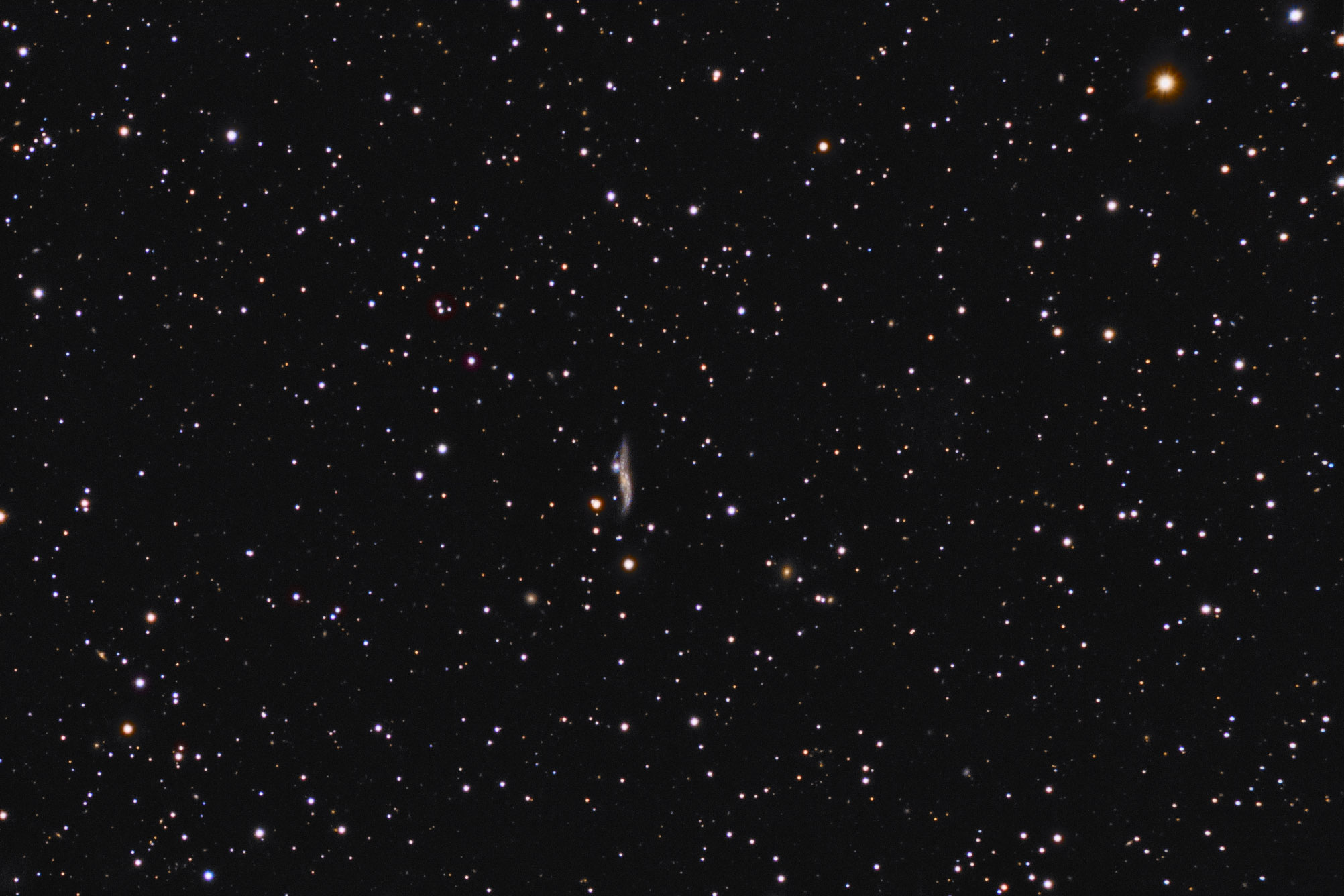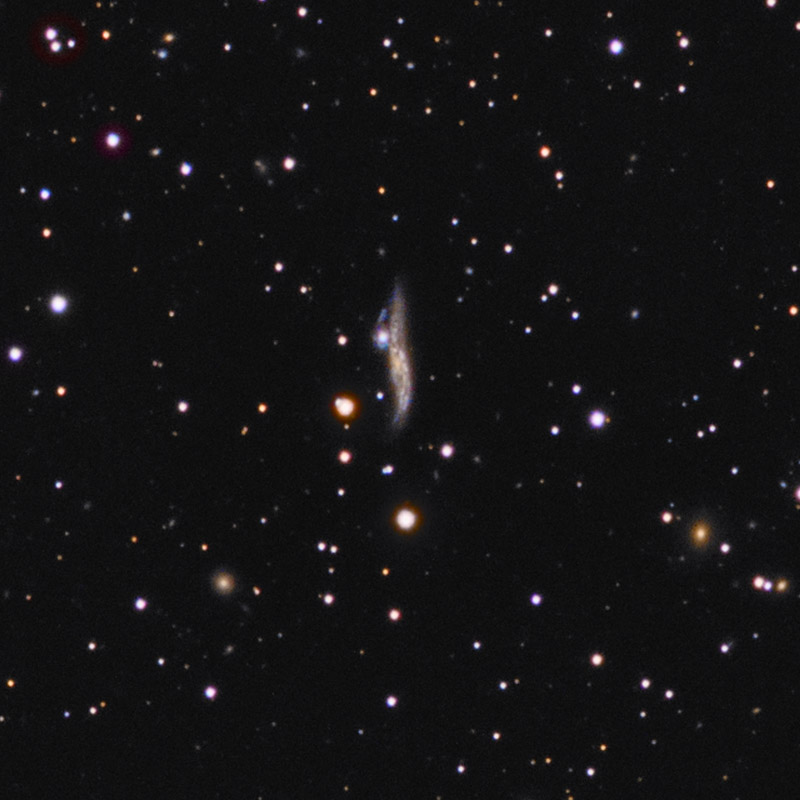| Description | Images |
Object name: NGC6636Designation(s): NGC6636, NGC 6636 is a pair of galaxies in eastern Draco north of its head. The pair are located about 200 million light-years distant. The near edge on galaxy is classified as Sc with a Seyfert 2 nucleus at NED. Seligman says Sc? The companion to the east MCG +11-22-047 is listed as a compact galaxy at NED and Sab? by Seligman. A note at NED says this about the companion: "Dwarf satellite connected to the primary by a short thin filament, mostly normal to the surface of the latter. Primary appears to be spheroidal, not spiral. VV 368 relates to the companion on a stem (at the left). On the list 45 VV 679 relates to the whole group." I'd translate this if I could but I think I'd need a few (many?) more shots to do so (booze not image frames). VV 679 is both galaxies while VV 368 refers only to the edge on galaxy according to NED but the comment seems to say it is the dwarf. I don't know where the "companion on a stem" comes from unless it is the blue apparently distant galaxy above the compact galaxy. The thin filament connecting the two is somewhat of a mystery as well. "Normal" usually means perpendicular. The only thing I see this may refer to is the blue arc under the compact galaxy. It is sort of normal to the edge on if an arc is allowed to be used this way. Other sources also refer to the compact being "attached" to the edge on. I'm afraid I don't see that. The comment that the primary appears to be spheroidal again is saying the dwarf is the primary? The whole thing makes no sense to me. It seems all backwards. Related Designation(s):CGCG 1822.0+6636, CGCG 322-041, CGPG 1822.0+6636, GALEXASC J182203.92+663709.9 , IRAS 18220+6635, IRAS F18220+6635, ISOSS J18220+6638, KPG 536, NGC 6636, NGC6636, NVSS J182203+663712, RXS J182203.6+663713, UGC 11221, VII Zw 790, VLANEP J1822.1+6637, VV 679, WN B1822+6635, [SLK2004] 1456, |

